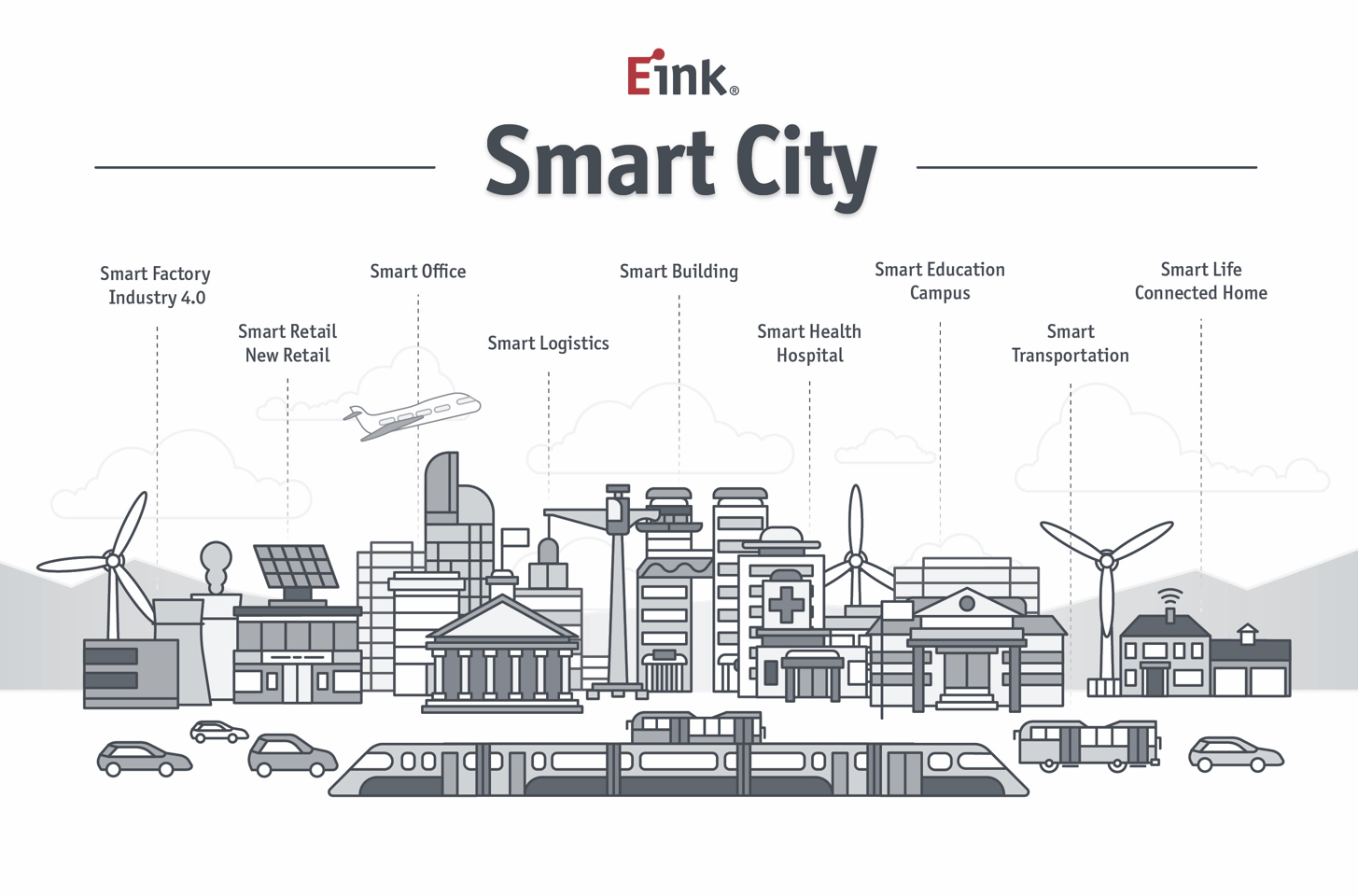Smart Cities, by definition, are interconnected. Data is shared among residents, visitors, businesses and government agencies to improve the quality of life. All of these connected devices require exponentially increasing power. Sustainable digital paper helps balance increasing energy needs with low power, long lasting displays.
Smart Cities are not a dream – they exist now all over the world. Within a day, a large portion of the world’s citizens interact with digital devices and services we call the Internet of Things.
We start the day with our smartphones and tablets. We check the progress of public transportation on a solar powered display relaying real time information on the bus or train we need, we check our steps with an activity tracker – which uploads the information to a cloud app via Bluetooth. As we pass through city centers, we may refer to an information kiosk regularly updated wirelessly with community activities. We stop for a little shopping and compare prices on wirelessly updated electronic shelf labels.
We get a moment to pull out our laptop or eNote writing device and download email, files and various updates to online platforms and apps. We retrace our steps through the city center and public transportation back home – check the steps on the activity tracker! Our smart home turns on the lights and adjusts the heat or air conditioning to our desired setting.
All of these activities have a common theme – constant communication with the cloud - wirelessly and via several types of displays. Any and all of these displays can be E Ink digital paper.
Download the new whitepaper from E Ink titled, The Growing Role of Digital Paper in Smart Cities, by Captains of Industry: http://go.eink.com/download-our-whitepaper-digital-paper-smart-cities


Leave Comment